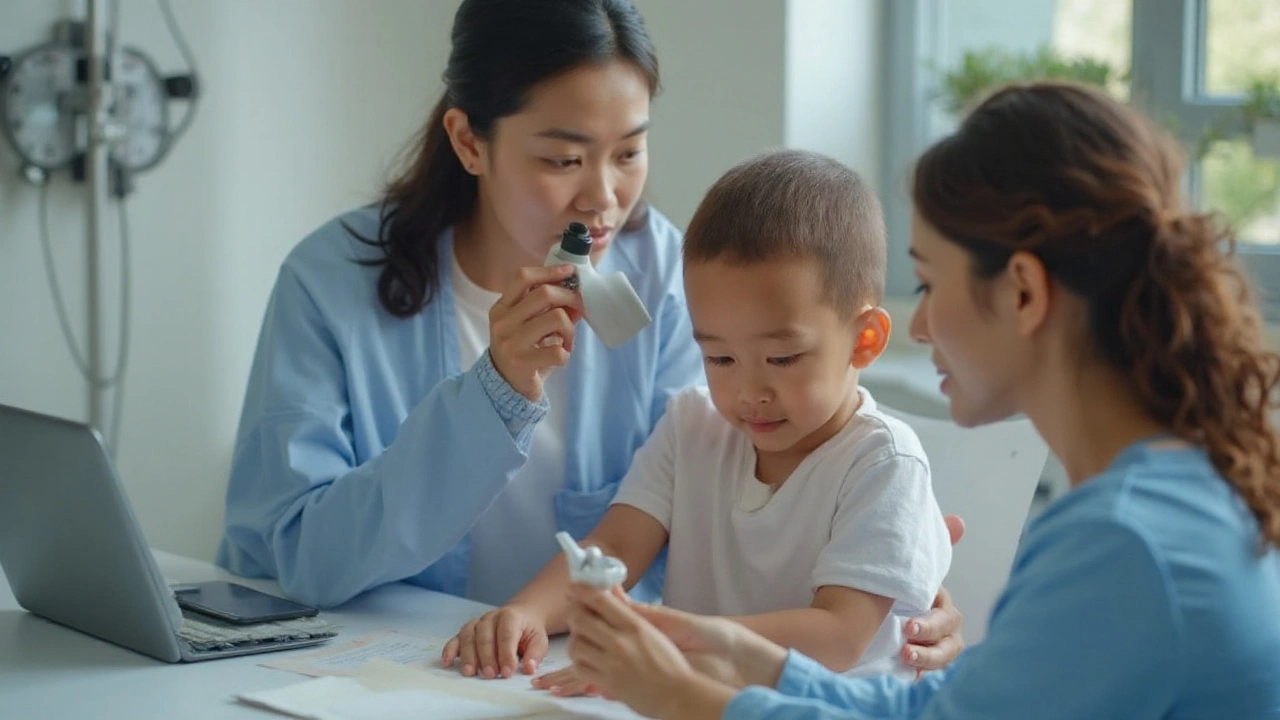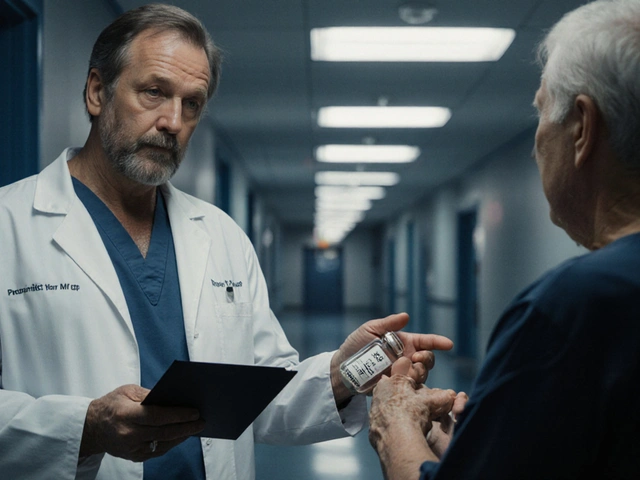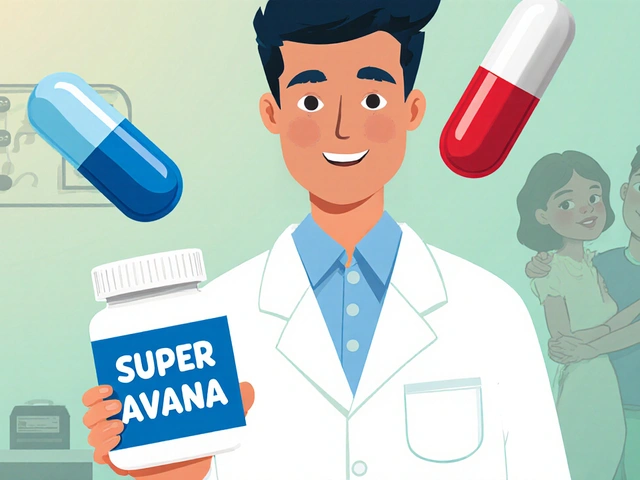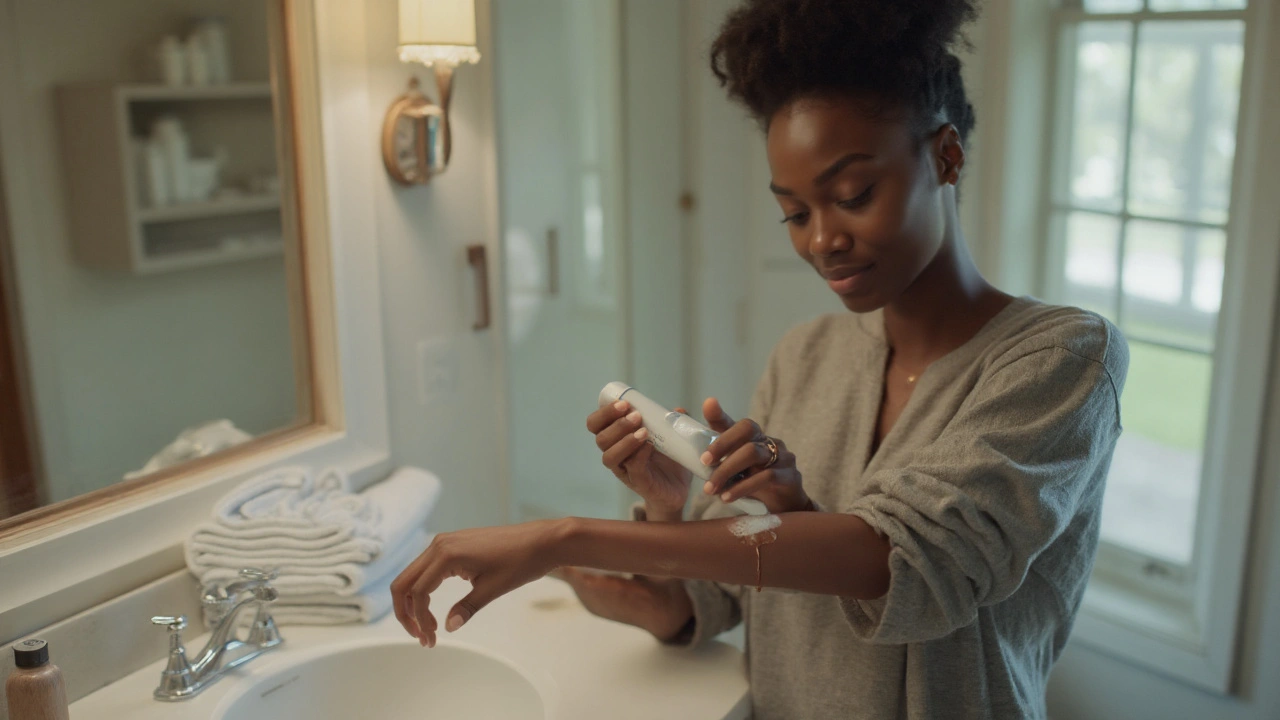Short answer? Yes-ringworm can be cured. No-it doesn’t have to keep coming back. But it will if you treat the patch and ignore the hidden sources that keep seeding it again: your shoes, your comb, your gym bag, your pet, or your partner’s undiagnosed rash. I’ve been there-my tabby cat Miso shared more than cuddles one summer-and the only way we stopped the cycle was by treating everyone who needed it and decluttering the environment, not just the skin.
- TL;DR: Ringworm is a fungal infection (not a worm). Cure is routine with the right antifungal and enough time. Recurrence means reinfection or incomplete treatment, not that it “lives in you forever.”
- Treatment basics: Skin/groin/foot-topical antifungals for 1-4 weeks; scalp/nails-oral meds for weeks to months. Stop itch fast, but keep treating 1-2 weeks after it looks clear.
- Stop the bounce-back: Clean soft items hot (60°C), disinfect hard surfaces, treat tinea pedis (athlete’s foot) to protect nails and groin, check pets, avoid steroid-only creams.
- See a clinician: If it’s on scalp/face/beard/nails, widespread, in babies, if you’re diabetic/immunocompromised, or if there’s no improvement in 10-14 days.
- Contagiousness: Usually drops within 48 hours of proper treatment (plus medicated shampoo for scalp), but spores linger. Keep up hygiene during therapy.
Cure vs Comeback: What Actually Happens With Ringworm
“Ringworm” is a catch-all for skin infections caused by dermatophyte fungi (tinea). It can affect body skin (tinea corporis), groin (tinea cruris), feet (tinea pedis), scalp (tinea capitis), and nails (onychomycosis). The fungus feeds on keratin, not blood. There’s no worm, and it doesn’t burrow inside your body like some parasite that can’t be evicted.
Can it be cured? Yes. We clear it by killing the fungus on and in the skin or nail with antifungals. For most body and foot infections, that’s a topical cream or spray. For scalp and nails, oral medication is needed because the fungus lives deeper in hair shafts and nail plates. Authorities like the NHS, CDC, and dermatology societies all consider tinea curable with appropriately chosen and completed therapy.
So why do people say, “It always comes back”? Two reasons: relapse and reinfection. Relapse is when the fungus wasn’t fully eliminated-maybe the cream was stopped early, the dose was too low, or a steroid-only cream masked the rash (tinea incognito). Reinfection is new exposure-from your athlete’s foot to your nails, from your groin to your inner thigh, from your child’s scalp to your pillowcases, or from a furry friend. If you only treat the visible patch, you miss the reservoir. That’s how you end up chasing circles.
Immunity doesn’t work like a one-and-done vaccine here. You don’t become permanently immune after a bout of ringworm. That’s why re-exposure matters. Some species, like Microsporum canis (common in cats), shed spores that can linger in the environment for months. Veterinary and public health groups warn that contaminated grooming tools, bedding, and dust can keep the cycle going long after skin looks fine.
Here’s the mindset shift that actually breaks the loop: ringworm is curable at the patch-and preventable at the sources. Treat the lesion correctly, then deal with where it came from (feet, nails, family, pets, shared kit, surfaces). When people do both, the “It always comes back” story tends to stop.
Evidence snapshot you can use: Cochrane reviews and dermatology guidelines consistently report high cure rates for tinea corporis/cruris/pedis with topical terbinafine or similar allylamines in 1-2 weeks, and reliable cure for scalp tinea with the right oral drug (terbinafine tends to beat griseofulvin for Trichophyton; griseofulvin can be better for Microsporum). Nail fungus needs patience: oral terbinafine works best but still needs months and has a meaningful relapse rate if athlete’s foot is not fixed.
One more myth to bin: “I’ve had it so long, it must be inside my blood.” No. Dermatophytes live in dead keratin layers. They’re stubborn in nails and hair because those structures grow slowly, not because the fungus is invincible. Cure is about time-on-target: the right drug, long enough, everywhere it’s hiding.

Treat It Right the First Time (Skin, Scalp, Nails)
The fastest way to a cure is matching the treatment to the location and species-and sticking with it past the point your eyes say, “All good.” If you’re in the UK like me, most skin cases start with pharmacy options; scalp and nails need a GP or dermatologist.
Body (tinea corporis), groin (tinea cruris), feet (tinea pedis):
- Choose the right topical: terbinafine 1% cream/gel once or twice daily for 1-2 weeks often clears body/groin faster than azoles; clotrimazole 1% or miconazole 2% work well in 2-4 weeks. Sprays or powders help in toe webs if moisture is an issue.
- Apply wider than the rash: extend 2 cm beyond the edge. Clean and dry first. Thin layer, not a blob.
- Keep going 1-2 weeks after it looks clear. The rash fading in a few days doesn’t mean the fungus is gone.
- Skip steroid-only creams. They calm redness but let fungus spread quietly. If a doctor prescribes a combined steroid/antifungal, it’s usually short-term for angry, itchy patches-then antifungal alone to finish the job.
- Feet specifics: dry between toes, change socks midday if sweaty, rotate shoes so each pair dries for 24 hours, consider antifungal powder for shoes.
Scalp (tinea capitis):
- See a clinician. Scalp tinea needs oral medication because the fungus sits in the hair shaft. Typical courses: terbinafine for 4 weeks (often best for Trichophyton species) or griseofulvin for 6-8 weeks (often better for Microsporum, common in cats). Your clinician may choose based on age, species likely in your area, and tolerability.
- Add a medicated shampoo: selenium sulfide 2.5% or ketoconazole 2% two to three times weekly reduces shedding spores and contagiousness. This does not replace oral treatment.
- No sharing combs, hair accessories, hats, or pillows. Wash or quarantine hair tools. Clean brushes or replace them.
- Household check: kids and adults can carry scalp fungus without obvious patches. Close contacts may be asked to use the shampoo temporarily, even if they look clear.
Nails (onychomycosis):
- Confirm the diagnosis if possible. Nails can thicken from psoriasis, trauma, or yeast. A lab test helps avoid months of the wrong drug.
- First-line: oral terbinafine (often 6 weeks for fingernails, 12 weeks for toenails). Cure rates are the best we have, but it’s not 100%. Many UK GPs will check your meds and may do a liver blood test before and/or during treatment.
- Combine tactics: keep nails short, file down thickened nails, treat athlete’s foot at the same time, and disinfect or replace nail tools. Some people add a topical lacquer (amorolfine) while the oral drug is working, which can help.
- Be realistic on timeline: nails grow slow. You judge cure by new, clear growth from the base. Recurrence risk is higher if you keep athlete’s foot.
When to see a clinician right away:
- Any ringworm on scalp, beard, or face; any nail involvement; very large/widespread patches; or if you’re a baby, pregnant, diabetic, or immunocompromised.
- No improvement after 10-14 days of proper topical therapy.
- Secondary infection signs: pus, fever, severe pain, red streaks, or a boggy, tender scalp swelling (kerion).
What to expect at the appointment: sometimes your clinician will treat based on appearance. Other times they’ll swab/scrape for microscopy and culture, especially for nails or scalp where species choice matters. Don’t be put off by waiting for results-if they start something and later tweak it, that’s normal practice.
Common pitfalls that sabotage cure:
- Stopping too soon because it “looks gone.” Keep going 1-2 weeks past clear for skin; finish the full course for scalp/nails.
- Using steroid-only cream. It blurs the rash into tinea incognito.
- Treating the patch but not the source (your own athlete’s foot, a pet, shared items).
- Not drying feet or re-wearing sweaty gear without washing.
- Re-using unclean hair tools after scalp tinea.
How fast do you stop being contagious? For body/groin/foot, the risk usually drops a lot after 48 hours of proper therapy. For scalp, add medicated shampoo and avoid sharing items from day one; schools often allow attendance after treatment starts, but always check local guidance.
| Type | First-line treatment | Typical duration | When less contagious | Key recurrence drivers |
|---|---|---|---|---|
| Body (tinea corporis) | Topical terbinafine 1% or azole cream | 1-2 wks (terbinafine) or 2-4 wks (azoles) | ~48 hrs after correct use | Stopping early; sharing towels; untreated contacts |
| Groin (tinea cruris) | Topical terbinafine/azole + moisture control | 2-4 wks | ~48 hrs after correct use | Untreated athlete’s foot; tight, sweaty clothing |
| Feet (tinea pedis) | Topical terbinafine/azole; powder for shoes | 2-4 wks | ~48 hrs after correct use | Damp shoes; gym floors; not drying between toes |
| Scalp (tinea capitis) | Oral terbinafine or griseofulvin + medicated shampoo | 4-8 wks | Typically after 48 hrs on therapy + shampoo | Shared combs; asymptomatic carriers; pets |
| Nails (onychomycosis) | Oral terbinafine; consider topical lacquer adjunct | 6-12 wks (fingers), 12+ wks (toes) | N/A (nails less contagious) | Ongoing athlete’s foot; tight shoes; slow nail growth |
Credibility notes you can trust: NHS guidance aligns with these durations; Cochrane reviews back shorter times to cure with allylamine creams for skin tinea; paediatric dermatology groups prefer griseofulvin for Microsporum scalp infections; adult data support terbinafine for Trichophyton. Nail cure rates are highest with oral terbinafine. Your clinician will tailor for safety, age, and species.
One practical rule: if you can’t treat the source, expect to treat the rash again. That’s not the medicine failing; that’s the environment re-seeding you.

Stop It From Coming Back: Cleaning, Pets, People, and Life After Treatment
This is the part most people skip, then blame fate. The fungus doesn’t teleport back. It hitchhikes on fabric, skin flakes, paws, and moist surfaces. Do these things while you treat, not after.
Quick home hygiene checklist (use during the full treatment window):
- Laundry: wash towels, socks, underwear, gym kit, and bedding at 60°C or higher. Bag and launder after 3-4 days if you can’t wash daily.
- Hard surfaces: wipe floors, tiles, and bathroom surfaces with a standard disinfectant. For spot disinfection of non-porous whites, diluted household bleach (about 1:10) can inactivate spores-ventilate and protect fabrics. Do not mix with other cleaners.
- Soft items: sun-dry when possible; rotate pillows/cushions; use clean pillowcases every few days if scalp is involved.
- Shoes: rotate pairs, air-dry for 24 hours, use an antifungal powder or spray, and wear socks that wick moisture.
- Skin routine: shower after sport, dry thoroughly (especially between toes and in the groin), then apply antifungal. Moisture gives fungus home-field advantage.
Gym, pool, and team sport habits:
- Flip-flops in shared showers.
- Don’t share towels, shin pads, helmets, or gloves.
- Wipe gear that touches skin; washable liners are worth it.
- Keep a spare pair of socks in your bag; change if damp.
Hair and scalp rules (if scalp tinea is in the house):
- No sharing combs, brushes, hats, hair ties, headphones.
- Clean brushes in hot soapy water or replace them. Some families bag hair accessories for two weeks while treating.
- Use medicated shampoo as directed even if your scalp looks calm.
Pets-especially cats and kittens-matter more than people think. Microsporum canis loves cats and can infect humans. If anyone in the home has scalp tinea, or you’re treating ringworm and you have a kitten with little circular hair loss patches or dandruffy fur, see a vet. Do not use human creams on animals. Vets often diagnose with culture and may use oral antifungals plus lime sulfur or similar dips. We went through this with Miso. Until the culture turned negative, we kept up cleaning, limited snuggle time to easy-to-wash blankets, and washed hands after handling. It wasn’t fun, but it worked-and the regrowth was worth it.
Work and school: most schools in the UK allow attendance once treatment has started, but policies vary. For scalp tinea, medicated shampoo reduces contagiousness. Communicate early with coaches or school nurses if a team has a few cases; sometimes group hygiene fixes break the chain faster than isolated efforts.
What if it keeps returning in the same spot? Think like a detective. Re-check for athlete’s foot if the groin keeps flaring (fungus travels). Look at shoes if toenails keep failing. Consider a culture if skin tests have never been done-some species need different oral meds. If the rash seems to improve with steroid creams but bounces back worse, flag tinea incognito with your clinician.
Here’s a simple decision guide you can follow:
- Is it scalp, nail, beard, or face? If yes, book a clinician. If no, go to step 2.
- Is it your first small patch on body/groin/foot? Try a pharmacy antifungal (terbinafine or azole) for 2-4 weeks. Mark the border so you can tell if it’s shrinking.
- Not better after 10-14 days? Not sure it’s ringworm? Or it’s widespread? Get seen; consider a test.
- Any pet with hair loss? Any family with itchy scalp? Tackle that source in parallel.
- While treating: clean kit, rotate shoes, wash hot, and keep applying 1-2 weeks after the skin looks clear.
Mini-FAQ (quick answers you probably want):
- Is there a permanent ringworm cure? Cure means you’ve cleared the current infection. You can get ringworm again if exposed, just like you can catch athlete’s foot again. The fix is treating the source and finishing the course.
- How long before I’m not contagious? Usually after 48 hours on proper therapy for skin; scalp needs oral meds plus medicated shampoo to lower shedding. Still avoid sharing items during treatment.
- Do I need to throw everything away? No. Wash fabrics hot, clean surfaces, and replace old makeup sponges/brushes or nail tools if you can’t disinfect them. Shoes can be salvaged with drying and antifungal powders.
- Can I use hydrocortisone for the itch? Only with an antifungal and ideally with clinician guidance. Steroid-only creams often make ringworm worse or hide it.
- Are home remedies like tea tree oil enough? Some have mild antifungal effects, but they’re inconsistent. Pharmacy antifungals are safer and more reliable. Don’t DIY on scalp or nails.
- Can my baby catch it? Yes. Babies need clinician assessment-avoid OTC creams without advice.
- Will oral antifungals hurt my liver? Serious liver issues are rare when prescribed appropriately and monitored if needed. Your clinician weighs risks and benefits and checks your medicines for interactions.
Personas and next steps:
- Parents: if one child has scalp tinea, line up medicated shampoo for siblings for a short preventive course per clinician advice. Bag or clean hair accessories, and update school. Expect 4-8 weeks of oral therapy.
- Athletes: treat athlete’s foot aggressively to protect nails and groin. Pack spare socks, use shower sandals, disinfect kit, and give shoes a day to dry before re-wearing.
- Pet owners: if you see circular hair loss or dandruff on a cat or dog, book the vet. Do not put human creams on pets. Follow the full veterinary plan-even when the fur looks better.
- People with diabetes or lowered immunity: call your clinician early. You may need longer treatment, oral therapy, or checks for secondary infection.
- Recurring ringworm veterans: ask for a culture and species ID; check household carriers; treat tinea pedis; and audit your cleaning routine. Consider replacing ancient brushes, combs, or nail clippers.
Proof it works: Dermatology audits show that most “recurrent” cases fall off once feet are treated alongside nails, contacts are screened, pets are managed, and cleaning is done throughout therapy. It’s not about buying exotic creams-it’s about thoroughness.
Red flags-don’t wait:
- A swollen, tender, boggy scalp lesion (kerion) or fever with scalp ringworm-urgent care to prevent scarring.
- Rapidly spreading redness, heat, or pus-possible bacterial superinfection.
- Eye involvement, beard area swelling, or ring-like rashes that keep appearing despite perfect antifungal use-consider a different diagnosis or mixed infection.
Finally, a note on mindset. Skin looks better long before spores are under control. That gap is where most people quit too soon. Set a reminder, mark your calendar, and treat past clear. Pair that with smart hygiene and source control, and you turn “It always comes back” into “It’s gone and stayed gone.”
If you like checklists, here’s a tight one to stick on the fridge:
- Treat the right place with the right drug for the right time.
- Keep going 1-2 weeks after clear (skin) or finish the full course (scalp/nails).
- Hot wash 60°C: towels, socks, underwear, bedding.
- Rotate and dry shoes; powder if needed; change socks midday if sweaty.
- No sharing towels, combs, hats, or hair tools.
- Medicated shampoo if scalp is involved (your clinician will specify).
- Check and treat athlete’s foot to protect groin and nails.
- Vet check if pets have suspicious patches; follow their plan.
- Reassess if no improvement in 10-14 days or if it’s spreading-get seen.
Citations you can look up if you’re curious: NHS ringworm and tinea guidance; British Association of Dermatologists patient leaflets; CDC information on ringworm and pets; Cochrane reviews on topical antifungals for tinea and oral therapies for scalp and nail infections; and veterinary dermatology guidance on Microsporum canis in cats. Different sources agree on the same theme: cure is expected, and recurrence is preventable.
From a Bristol household that has beaten it (thanks, Miso), you’ve got this.






17 Comments
Been there with my dog-same story. Thought the rash on my arm was just eczema till it spread like a bad TikTok trend. Turns out Fido had a bald spot behind his ear. We did the whole antifungal cream + hot wash + shoe rotation thing. No more ringworm circles. Just me, my socks, and a newfound respect for laundry.
Also, never again using my roommate’s towel. Ever.
i was just wondering… if you wash stuff at 60c, does that kill the spores for good? or do they come back like weeds in a garden? i’m scared to touch my brushes again lol
What struck me most is how this isn’t a medical failure-it’s a systems failure. We treat the symptom, not the ecosystem. The fungus isn’t a villain in a horror movie; it’s a silent tenant who moved in while we weren’t looking, and we forgot to evict it properly.
It’s like trying to fix a leaky roof by mopping the floor. You need to fix the shingles. And the gutters. And the neighbor’s tree that’s dropping leaves into your downspout.
This post didn’t just inform me-it restructured how I think about chronic infections. Thank you.
Excellent and meticulously detailed overview. The distinction between relapse and reinfection is clinically vital and often misunderstood by patients. The emphasis on environmental decontamination aligns with current dermatological best practices, particularly in pediatric and immunocompromised populations. I would only add that UV-C light devices for disinfecting shoes and hairbrushes have shown promising results in recent peer-reviewed studies.
OMG YES. My cat did this to me 😭 I thought I was cursed. Then I found out my 3-year-old’s stuffed bunny was a spore nest. We threw it out. We cried. We bought a new one. Now I sanitize everything. 🧼🐾 #RingwormWarrior
Let me guess-Big Pharma wrote this. They want you to buy terbinafine for $80 a pill while hiding the fact that vinegar and tea tree oil have been curing this for centuries. And don’t get me started on ‘medicated shampoo’-that’s just a Trojan horse for synthetic chemicals. Your cat? Probably infected by 5G towers. The real cure? Detox your chakras and stop using polyester socks. I’ve seen it work.
Also, the CDC is lying. I know.
As someone from Mumbai where humidity is a co-conspirator, I’ve seen ringworm turn into a neighborhood epidemic. In our slums, it’s not about terbinafine-it’s about access. No one has 60°C washing machines. No one has private bathrooms. The real issue isn’t the fungus-it’s poverty. The post is brilliant, but it assumes a world where you can rotate shoes, buy antifungal powder, and wash bedding hot. In my city, people use neem leaf paste and pray. And sometimes, it works. We need public health campaigns that meet people where they are, not where the NHS thinks they should be.
Also, cats don’t care about your laundry. They just want cuddles. And the fungus? It’s just trying to survive. Maybe we should stop seeing it as an enemy and start seeing it as a symptom of inequality.
Statistically, recurrence rates for onychomycosis are 20-50% even with proper oral therapy. The author downplays this. Terbinafine has a 70% cure rate in ideal conditions, but real-world compliance is abysmal. Also, the claim that ‘contagiousness drops after 48 hours’ is misleading-spore shedding continues for weeks. This post reads like a pharmaceutical ad with a touch of wellness influencer flair. Solid structure, but lacks nuance on failure modes.
You got this. Seriously. I’ve been where you are. Ringworm felt like a life sentence. But you’re not broken. You’re not cursed. You’re just dealing with a stubborn fungus that doesn’t know it’s 2025.
Do the laundry. Dry your shoes. Treat your feet. Be the boss of your body. One week at a time. You’re not alone. I’ve been there. And now? I’m ringworm-free. You will be too. 💪🧼🫡
Hey, I just read this and I’m wondering-do you think it’s safe to use the same shower after treating ringworm? I mean, I’ve got a roommate and I don’t want to be the fungus guy. Should I spray the floor or just hope for the best?
Oh my god, I just realized-I’ve been using hydrocortisone on my groin for months because it ‘calms the itch.’ No wonder it keeps coming back. I feel like such a fool. And now I have to tell my partner I gave him ringworm? 😭 I’m crying in my yoga pants. But seriously-thank you. This is the most helpful thing I’ve read in years. I’m washing everything. Even my pillow. I’m not even mad. Just… enlightened.
Let’s reframe this: ringworm isn’t a disease you fight-it’s a mirror. It shows you where your hygiene habits are weak, where your environment is neglected, and where you’ve let convenience override care. I used to think it was ‘bad luck.’ Now I see it as a wake-up call.
I started treating my athlete’s foot while treating my groin rash. I replaced my shower mat. I stopped wearing the same socks two days in a row. I even started airing out my sneakers in the sun. And guess what? It hasn’t come back in 11 months.
This isn’t about medicine. It’s about mindfulness. You’re not just curing a rash-you’re upgrading your life.
As someone raised in a household where sharing towels was a sign of love, this hit hard. We never thought fungus could live on a comb or a pillowcase. My grandmother used to say, ‘If it doesn’t kill you, it makes you stronger.’ Turns out, it just makes you itchy for six months.
Thank you for this. I’m going to talk to my sister about her cat. And I’m finally throwing out that old hairbrush from 2012. It’s time.
I’ve had ringworm three times. Each time, I thought I was doing everything right. But I never cleaned my gym bag. Never washed my yoga mat. Never asked my partner if he had an itchy foot.
This post made me realize I was treating the symptom, not the story.
I’m going to start a checklist. And I’m going to stick it on my mirror. Not because I’m scared-but because I deserve to feel normal again.
While the clinical recommendations are generally aligned with current evidence-based guidelines, it is imperative to note that the efficacy of topical terbinafine is contingent upon adequate application technique and duration. Incomplete coverage and premature discontinuation remain the most common causes of therapeutic failure, irrespective of agent selection. Furthermore, the assertion regarding the efficacy of 60°C laundering is substantiated by mycological studies demonstrating spore inactivation at this threshold. However, the efficacy of bleach-based disinfection on porous surfaces remains empirically unsupported and should be approached with caution.
THIS IS WHY AMERICA IS LOSING THE WAR ON INFECTIONS. We treat symptoms, not the enemy. The fungus doesn’t care about your ‘terbinafine’ or your ‘medicated shampoo.’ It’s a foreign invader-and we’re letting it win because we’re too lazy to burn the whole house down. I’ve got a friend who got ringworm from a hotel. He didn’t even wash his suitcase. That’s why we need national sanitation standards. No more sharing towels. No more gym showers without rubber boots. No more cats in the bedroom. We need a Ringworm Task Force. I’m starting a petition. #RingwormEmergency
My cat had it. I had it. My kid had it. We did everything right. And still-it came back. Twice. The third time, I called the vet. Turns out the cat had a hidden patch under its tail. We missed it. The fungus didn’t come back because we failed. It came back because we didn’t look hard enough.
So now? I check my pets like I check my kids. Every week. No exceptions.
It’s not magic. It’s just vigilance.